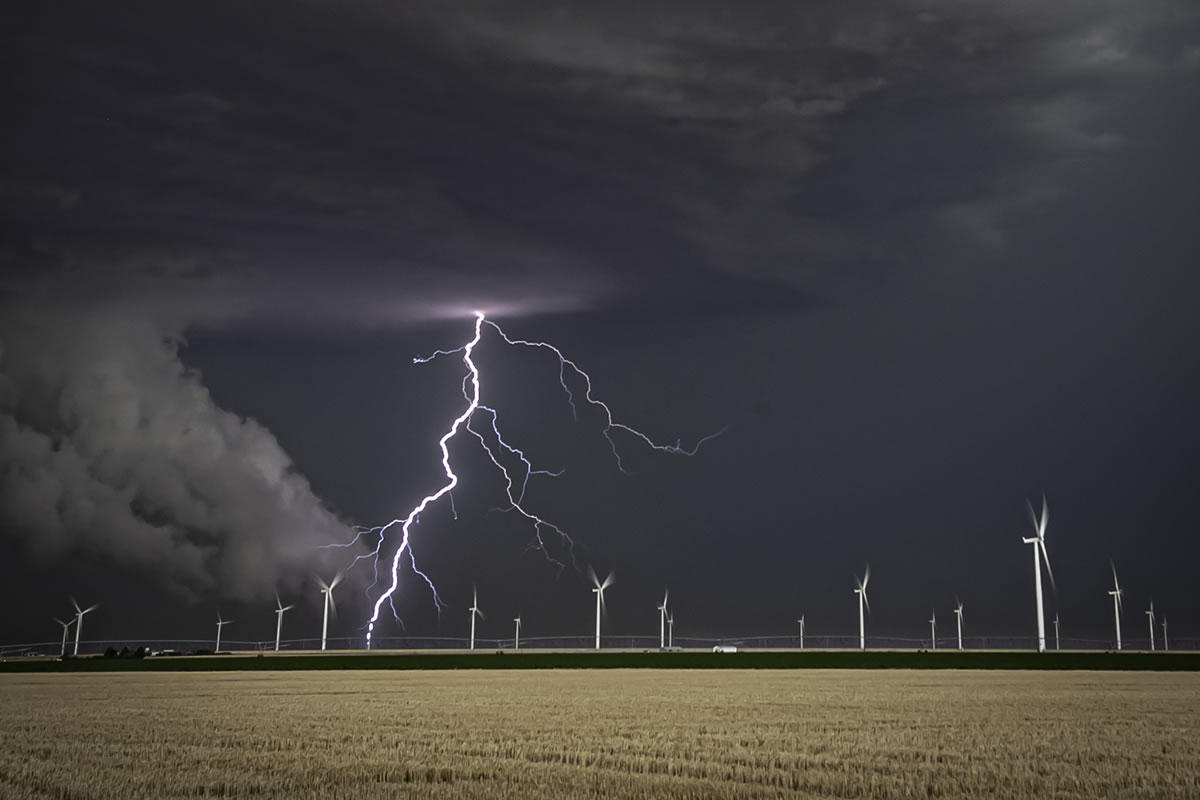Effects of Lightning Strikes on Wind Turbines
Situation
An energy provider lost grid power capability when one of their large wind turbines was struck by high intensity lightning. This caused the loss of a wind turbine blade, generator, electronic controls, and a loss of ability to provide peak power according to contract requirements. Lightning is a serious concern for wind turbines and wind farm owners.
Objective
The Haag Canada expert was contracted to conduct a detailed evaluation to determine the root cause of the wind turbine failure, in addition to providing a preventative solution to reduce exposure to future lightning strikes.
Approach
There are over 2,000 electrical storms active worldwide at any time producing more than 100 flashes per second. Tall structures in wide open flat ground are very attractive to lightning. In general, a wind turbine blade will receive 20-30 lightning strikes in its lifetime of operation. Wind turbines are exposed to two different types of lightning: downward and upward lightning. Downward initiated lightning starts in a thunderstorm and propagates downward. Upward lightning is a self propagating lightning that travels upward from blade tip to meet a downward bolt from an overlaying electrified storm cloud. Due to the trend of turbine height increasing, the upward initiated lightning typically occurs on taller turbines. Lightning effect and risk will vary by turbine construction, lightning protection installed and turbine location in the wind farm.
Wind turbine fires occur on average 1 in every 2,000 turbines annually. Based on an estimated 80,000 wind turbines in North America, that creates a potential of 40 wind turbine fires annually. Fires are typically caused primarily by lightning strike and secondarily by internal failures of wind turbine components.
The Haag Canada expert diagnosed that the lightning protection system installed on the turbine was overwhelmed by the high intensity lightning it received in its location in the wind farm. Full analysis of damaged components was performed individually and as a system. The main turbine blade was destroyed from the direct lightning strike and the occurring fire. The generator and control system were severely damaged and required complete replacement.
Project management was provided by the Haag representative to source replacement components. Detailed analysis of damage on the wind turbine as a system including on site investigation provided the basis for a recommendation for an improved lightning protection system, an enhanced generator and electronic controls to protect against future high intensity lightning strikes.
